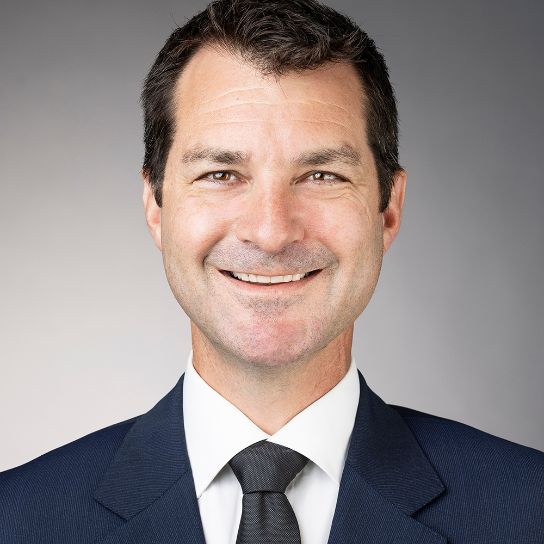While there were only a handful of greenfield large-scale solar and wind farm project financings in FY2014, the outlook for 2015 and 2016 looks much stronger.
Promising market conditions
These better conditions are due to the resolution of the renewable energy target (RET) impasse, the upcoming second round of the ACT Wind Auction, announcement of the Australian Renewable Energy Agency (ARENA) Large-Scale Solar PV Competitive Round, and announcement of Ergon Energy’s large-scale solar tender. Sponsors of new projects seeking limited recourse project finance for construction will be coming to the market at a great time because there is a very liquid and competitive debt market for quality large-scale renewables projects in Australia and borrowers can find attractive terms. FY2014 deals – including numerous opportunistic refinancing’s of operating projects – is proof that Australian, Japanese, Chinese and European banks operating in the Australian project finance market are offering lower upfront fees and margins than have been seen in the market for at least a decade.
Longer-tenor debt – in the form of mutual funds, insurance companies and pension funds – is also more available to Australian renewables projects than it has been previously. This is in part due to US private investors keen on investing in certain operating projects, several newly established local superannuation debt funds offering longer-tenor debt products, and some commercial banks willing to stretch beyond the traditional five-year loan terms traditionally offered in this market.
How to structure a ‘bankable’ project for project finance
To access non-recourse – otherwise known as off-balance-sheet – project financing for your renewables project, particularly during construction, it is important to ensure your project fundamentals are ‘bankable’. The key things financiers will consider when deciding whether or not to bank a project and what level of gearing a project can support are:
- Bankable site resource assessment (wind/ solar data)
- Extent of merchant price risk (large-scale renewable energy certificates [LREC] and/or electricity)
- Terms of offtake (LREC and electricity), power purchase agreements (PPA) or feed-in-tariff (FiT)
- Pass-through of change in law risk (including future RET amendments) under PPA/FiT
- Creditworthiness of PPA/FiT counterparty
- Creditworthiness and track record of construction/EPC contractor(s) and appropriate risk allocation in contracts
- Proven technology/new technology risk
- Events that can cause termination of the PPA/FiT and any compensation payable – i.e. commissioning delay, change in law, termination for convenience
- Appropriate land tenure and development approvals and appropriate consents to financier security in key land documents and project contracts
- Reputable equity sponsors with proven sector experience, at least until project commissioning
What are key considerations and trends for FY2015?
With the market geared for numerous new large-scale solar and wind projects, there will be several trends and key points of focus for project financing.
The use of reverse auctions by the ACT Government and additionally ARENA with its Large-Scale Solar PV Competitive Round show that there will be more focus than ever on reducing project financing costs for bid competitiveness.
Banks will likely be asked to sharpen their pencils on pricing to win mandates in a market where pricing is already considered tight. As aforementioned, longer-tenor debt products will be also be a strong focus in this context. This means project sponsors who can achieve well-priced swapped fixed-rate debt with tenors longer than the traditional Australian maximum benchmark of five years will have an advantage.
It will be interesting to see if European and other international project finance banks in the market lead a trend toward seven-year tenors or longer limited recourse debt on competitive terms.
It will also be interesting to observe in the next two to three years whether the large-scale solar and wind projects that have 20-year FiTs from the ACT Government will seek to refinance with much longer 12 to 15 year tenor debt capital markets issuances – in the US private placement or other debt capital markets – following achievement of practical completion.
There will likely be more of a need to consider longer-term operations and maintenance contracts to make projects bankable for the longer term. There are also other issues to consider with these products, such as cross-currency swaps, early prepayment costs, different levels of operational flexibility, and potential restrictions on changes of equity ownership.
Another key factor in the project financing of the new wave of large-scale solar and wind projects in Australia will be the extent of the banks’ willingness to accept merchant price risk.
Most market participants acknowledge that it is unlikely there will be many long-term – 10 year plus – PPAs written by the large retailers, despite the RET amendments.
This means that sponsors may look to the project finance market with LREC-only offtake contracts, shorter term black and green PPAs, or fully merchant projects.
Merchant price risk is tricky for banks, given recent declines in wholesale electricity demand and inaccurate forward price forecasting in the past. It will be very interesting to see which banks offer project financing and at what gearing levels for the next few projects to come to market. These projects have significant elements of merchant exposure.
It remains to be seen whether these trends will set the benchmark for the next round of project financing in the next 12 to 18 months.
This article was Written by Gerard Pike, Partner, Melbourne.
Legal Notice
The contents of this publication are for reference purposes only and may not be current as at the date of accessing this publication. They do not constitute legal advice and should not be relied upon as such. Specific legal advice about your specific circumstances should always be sought separately before taking any action based on this publication.
© Herbert Smith Freehills 2024

